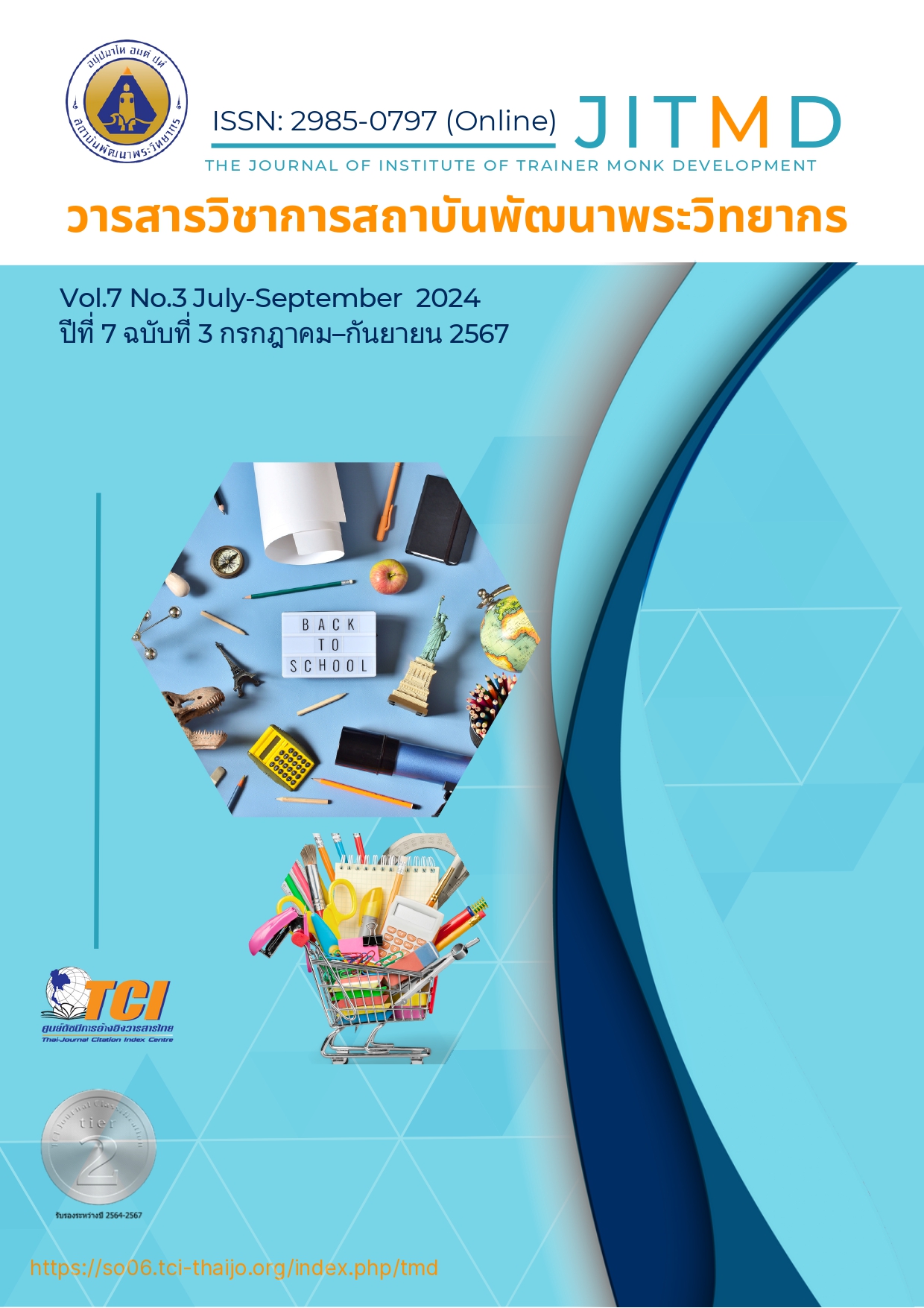การประเมินความต้องการจำเป็นและแนวทางการเป็นองค์กรแห่งความสุข ของสถานศึกษา ในสังกัดสำนักงานเขตพื้นที่การศึกษามัธยมศึกษาตรัง กระบี่
Main Article Content
บทคัดย่อ
การวิจัยครั้งนี้มีวัตถุประสงค์คือ 1) เพื่อศึกษาสภาพปัจจุบันและสภาพที่คาดหวังของการเป็นองค์กรแห่งความสุขของสถานศึกษา ตามความคิดเห็นของครู ในสังกัดสำนักงานเขตพื้นที่การศึกษาตรัง กระบี่ 2) เพื่อประเมินความต้องการจำเป็นของการเป็นองค์กรแห่งความสุขของสถานศึกษา ตามความคิดเห็นของครู ในสังกัดสำนักงานเขตพื้นที่การศึกษาตรัง กระบี่ 3) เพื่อศึกษาแนวทางการเป็นองค์กรแห่งความสุขของสถานศึกษา ในสังกัดสำนักงานเขตพื้นที่การศึกษาตรัง กระบี่ ผลการวิจัย พบว่า 1. องค์ประกอบการเป็นองค์กรแห่งความสุขของสถานศึกษา ในสังกัดสำนักงานเขตพื้นที่การศึกษามัธยมศึกษาตรัง กระบี่ ประกอบด้วย 4 ด้าน คือ 1) ด้านความสมานฉันท์ในองค์กร 2) ด้านทัศนคติเชิงบวกต่องานที่ทำ 3) ด้านที่ทำงานน่าอยู่ และ 4) ด้านคนทำงานมีความสุข 2. การประเมินค่าดัชนีความต้องการจำเป็น หรือ Modified Priority Needs Index (PNImodified) ในการจัดลำดับความสำคัญของความต้องการจำเป็นเป็นองค์กรแห่งความสุขของสถานศึกษา ในสังกัดสำนักงานเขตพื้นที่การศึกษามัธยมศึกษาตรัง กระบี่ พบว่า ด้านความสมานฉันท์ในองค์กร อยู่ในระดับสูงสุด ลำดับที่ 2 คือ ด้านที่ทำงานน่าอยู่ ลำดับที่ 3 คือ ด้านคนทำงานมีความสุข และด้านที่ค่าคะแนนต่ำสุด คือ ด้านทัศนคติเชิงบวกต่องานที่ทำ 3. แนวทางในการเป็นองค์กรแห่งความสุขของสถานศึกษา ในสังกัดสำนักงานเขตพื้นที่การศึกษามัธยมศึกษาตรัง กระบี่ มีดังนี้ 1) ด้านความสมานฉันท์ในองค์กร ทำได้โดยการจัดกิจกรรมสร้างความสัมพันธ์ภายในองค์กรให้เกิดขึ้น 2) ทัศนคติเชิงบวกต่องานที่ทำ ทำได้โดยสร้างความมั่งคงพื้นฐานให้กับผู้ปฏิบัติหน้าที่ในระบบราชการ ส่งเสริมการปฏิบัติงานที่มีประสิทธิภาพ ให้ความสำคัญกับผลการปฏิบัติงานมากกว่าระบบอาวุโส 3) ที่ทำงานน่าอยู่ ทำได้โดยร่วมกันปรับปรุง พัฒนาสถานศึกษา และ 4) คนทำงานมีความสุข ทำได้โดยสร้างความตระหนักให้เห็นความสำคัญของการทำงาน
Article Details

อนุญาตภายใต้เงื่อนไข Creative Commons Attribution-NonCommercial-NoDerivatives 4.0 International License.
บทความที่ได้รับการตีพิมพ์เป็นลิขสิทธิ์ของวารสารวิชาการสถาบันพัฒนาพระวิทยากร
ข้อความที่ปรากฎอยู่ในบทความที่ได้รับการตีพิมพ์ในวารสาร ถือเป็นความรับผิดชอบของผู้เขียนบทความ และข้อคิดเห็นนั้นไม่ถือว่าเป็นทัศนะและความรับผิดชอบของกองบรรณาธิการวารสารวิชาการสถาบันพัฒนาพระวิทยากร
เอกสารอ้างอิง
กมลทิพย์ ใจเที่ยง. (2563). การบริหารองค์กรแห่งความสุขในโรงเรียนประถมศึกษา. วารสารศึกษาศาสตร์มหาวิทยาลัยศิลปากร, 18(2): 74-93.
กิตติพงษ์ พรมทอง. (2556). การศึกษาความพึงพอใจในการปฏิบัติงานของข้าราชการครูใน สถานศึกษาสังกัดสำนักงานเขตพื้นที่การศึกษาประถมศึกษาหนองคายเขต 2. ปริญญาครุศาสตรมหาบัณฑิต สาขาวิชาการบริหารการศึกษา. มหาวิทยาลัยราชภัฏมหาสารคาม.
นันท์สินี ทวิสุวรรณ. (2562). สุขภาวะองค์กรของโรงเรียนบ้านเขาอ่างแก้ว. วารสารการบริหารการศึกษา มหาวิทยาลัยศิลปากร, 13(7): 98-100.
บุญชม ศรีสะอาด. (2556). การวิจัยเบื้องต้น. (พิมพ์ครั้งที่ 7). กรุงเทพฯ: สุวีริยาสาสน.
สำนักงานเขตพื้นที่การศึกษามัธยมศึกษาตรัง กระบี่. (2565). ข้อมูลสารสนเทศ
ทางการศึกษา ปีการศึกษา 2565 ในสำนักงานเขตพื้นที่การศึกษามัธยมศึกษาตรัง
กระบี่. สืบค้นข้อมูลเมื่อ 15 มีนาคม 2565 จาก https://www.sesatrgkbi.go.th/site/?fbclid=IwAR0memn2CQzj3z-2zfy8bzyI8a_gVztSeh278jTGCwe79yroywcnZfjdm2w.
สำนักงานคณะกรรมการพัฒนาเศรษฐกิจและสังคมแห่งชาติ. (2559). สรุปสาระสำคัญแผนพัฒนาเศรษฐกิจและสังคมแห่งชาติ ฉบับที่สิบสอง พ.ศ. 2560-2564. กรุงเทพฯ: สำนักงานคณะกรรมการพัฒนาเศรษฐกิจและสังคมแห่งชาติสำนักนายกรัฐมนตรี.
อัชฌา ชื่นบุญ และคณะ. (2556). รายงานวิจัยปัจจัยที่ส่งผลต่อความสุขในการทำงานของบุคลากรในโรงพยาบาลโรงพยาบาลเซนต์เมรี่. นครราชสีมา: โรงพยาบาลเซนต์เมรี่.
อนุพงศ์ รอดบุญปาน และนุชนรา รัตนศิระประภา. (2562). องค์กรแห่งความสุขของโรงเรียนอนุบาล กุยบุรี (วัดวังยาว). วารสารการบริหารการศึกษามหาวิทยาลัยศิลปากร, 10(2): 245-257.
Krejcie, R.V., & Morgan, D.W. (1970). Determining Sample Size for Research Activities. Educational and Psychological Measurement, (30)(3): 607-610.


